I did this illustration back in the 1990’s for the National Science Foundation called “What is a WATERSHED?”, through my work with Scholastic in the 1990’s. It was meant as both a poster and as the cover of a science workbook provided to classrooms. Scholastic played the role of publisher and distributor. And I worked directly with an educator at the National Science Foundation to develop the content of this project. It was part of a set of publications designed to TEACH young children some basic science and how our lives as HUMANS impacts the natural environment.
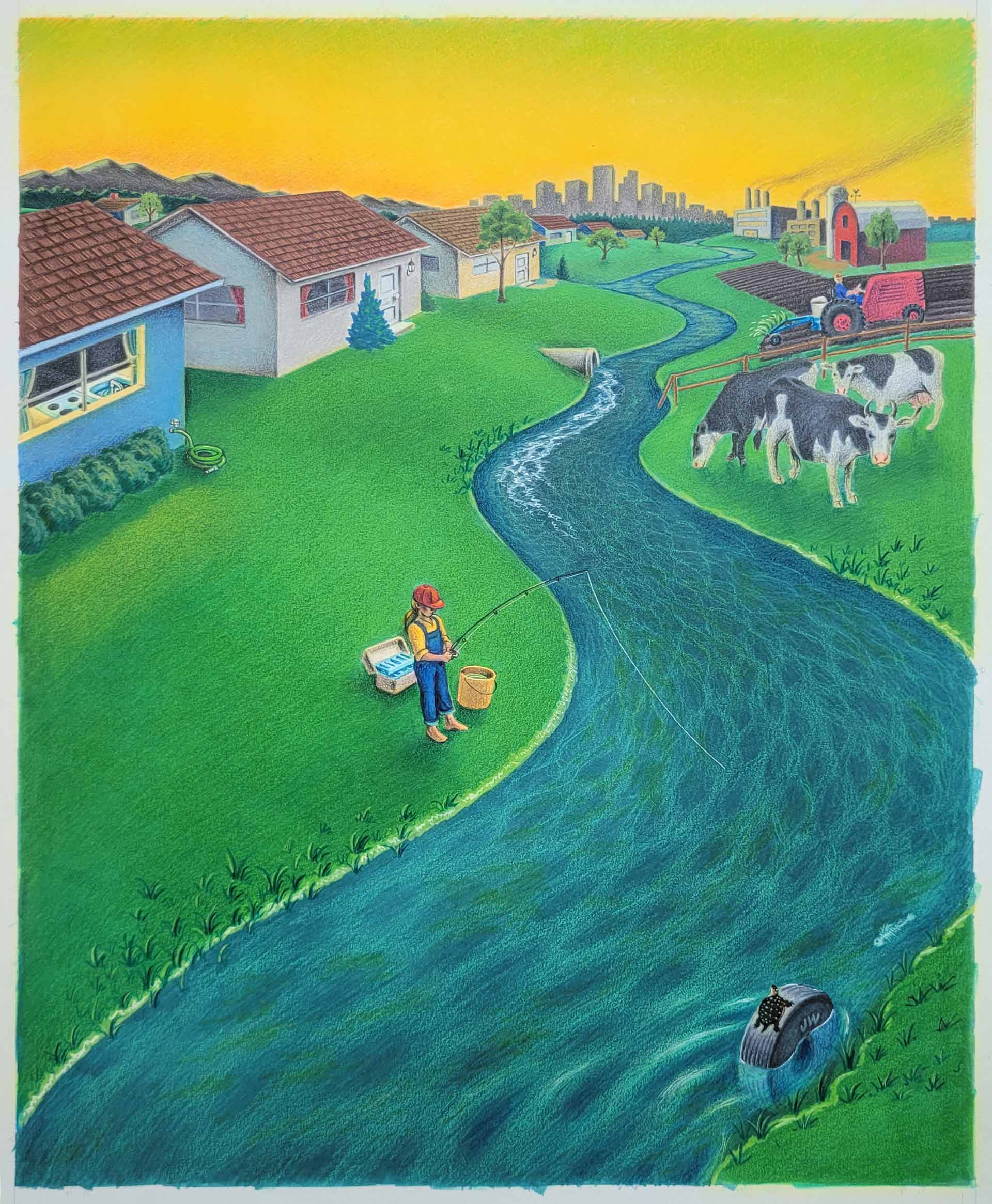
and the National Science Foundation.
When you look at this image and give it the time of attention, you will see that it is a puzzle to be put together. The power of illustration as a TEACHING TOOL is clear in this image when you examine the details. Really great, teaching Illustrations can be complex, filled with ideas and layered with subtle meaning that can only be perceived when the brain has time to digest.
This illustration was created with two mediums: Acrylic paint applied as a wash, and PrismaColor color pencils drawn on top of that thin coat of paint. You can see the texture of the colored pencil in several areas. I applied a lighter color on top of a darker color to help make the texture of the pencils more apparent.
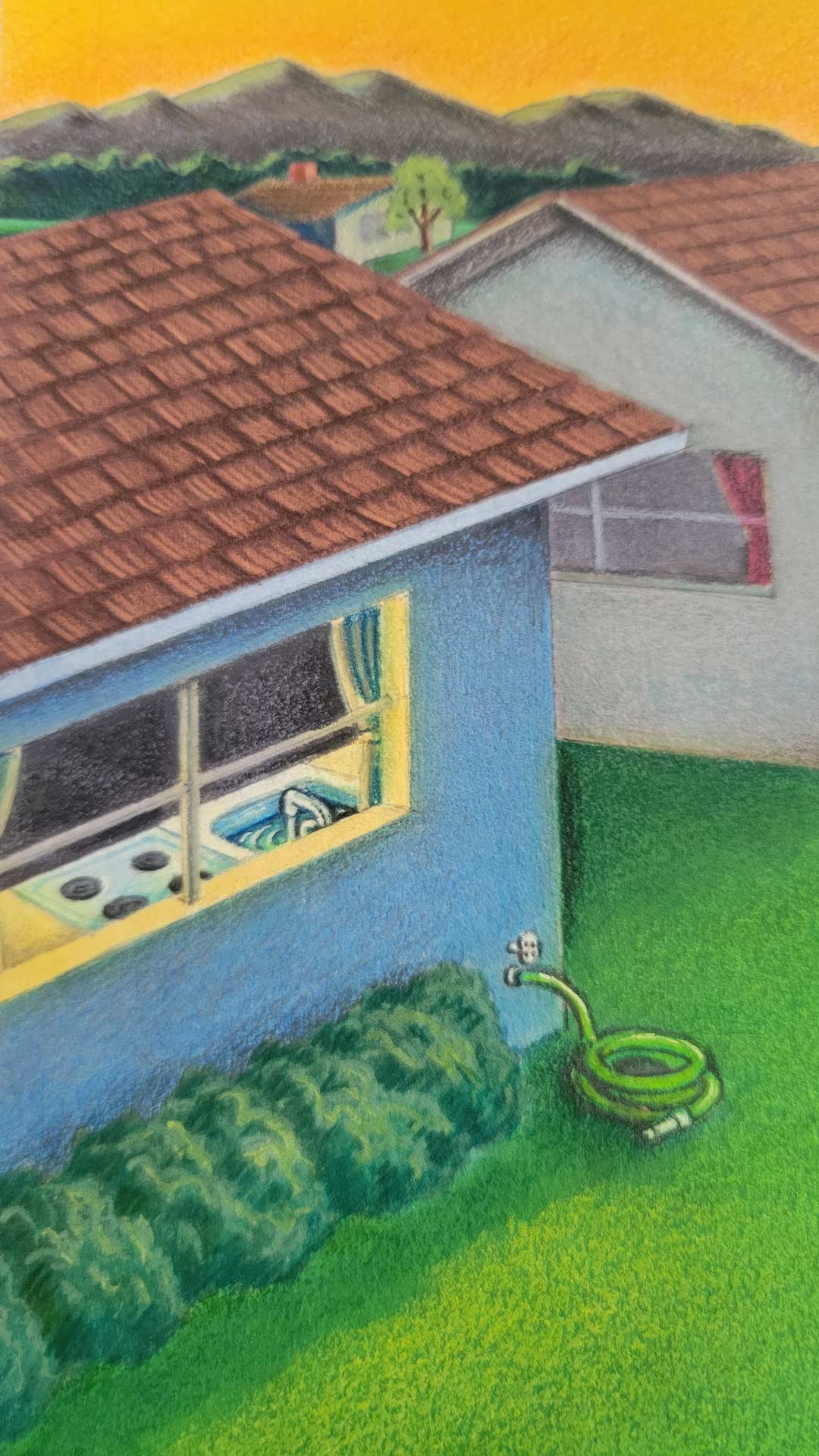
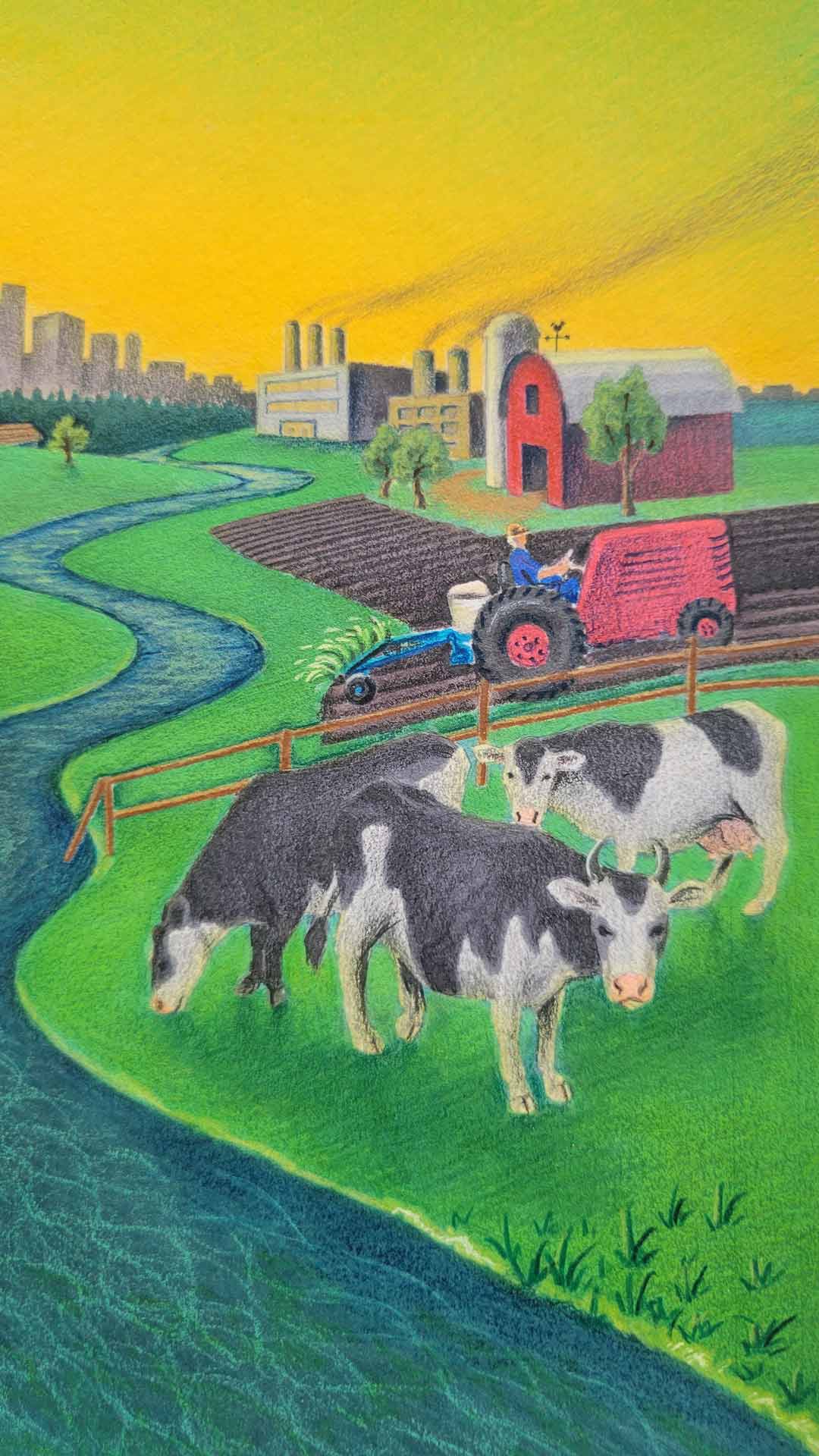
Science is one of the fields where complicated, abstract concepts need to be explained with diagrams, charts, graphs and illustrations that accompany editorial text that is thick with jargon and heavy language. When the brain gets bogged down after reading a complicated concept, an image can help the brain shift to a different form of cognition. One that is more visceral and nuanced, where a thousand words would fail. Try to imagine a concept that is easier to sketch out than it is to find the perfect words for.
Each of these small vignettes embedded in the overall landscape tells a story of how we affect the watershed, and what effect that action has on both the lives of animals and humans who live near the water or use it for recreation and food.
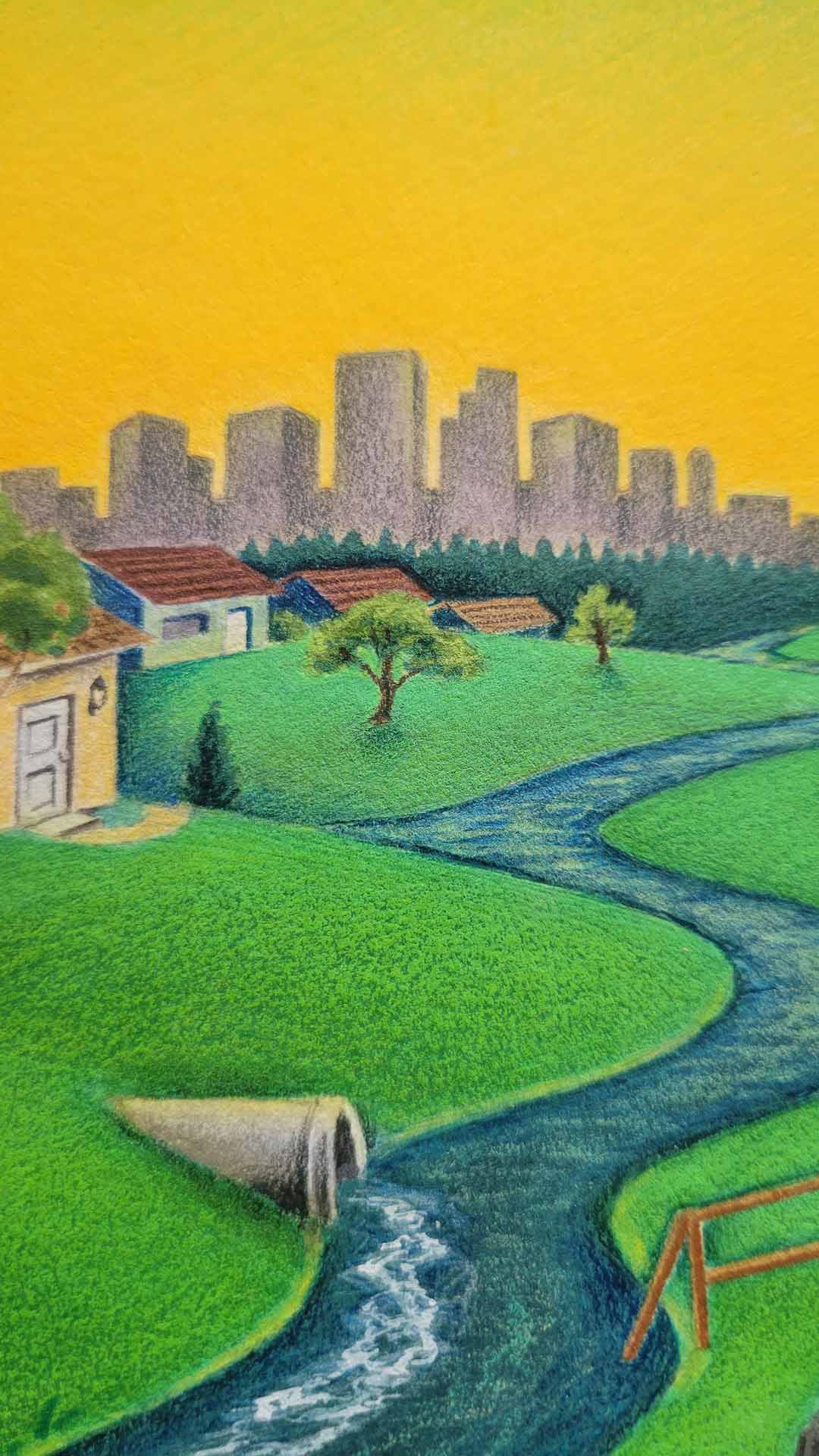
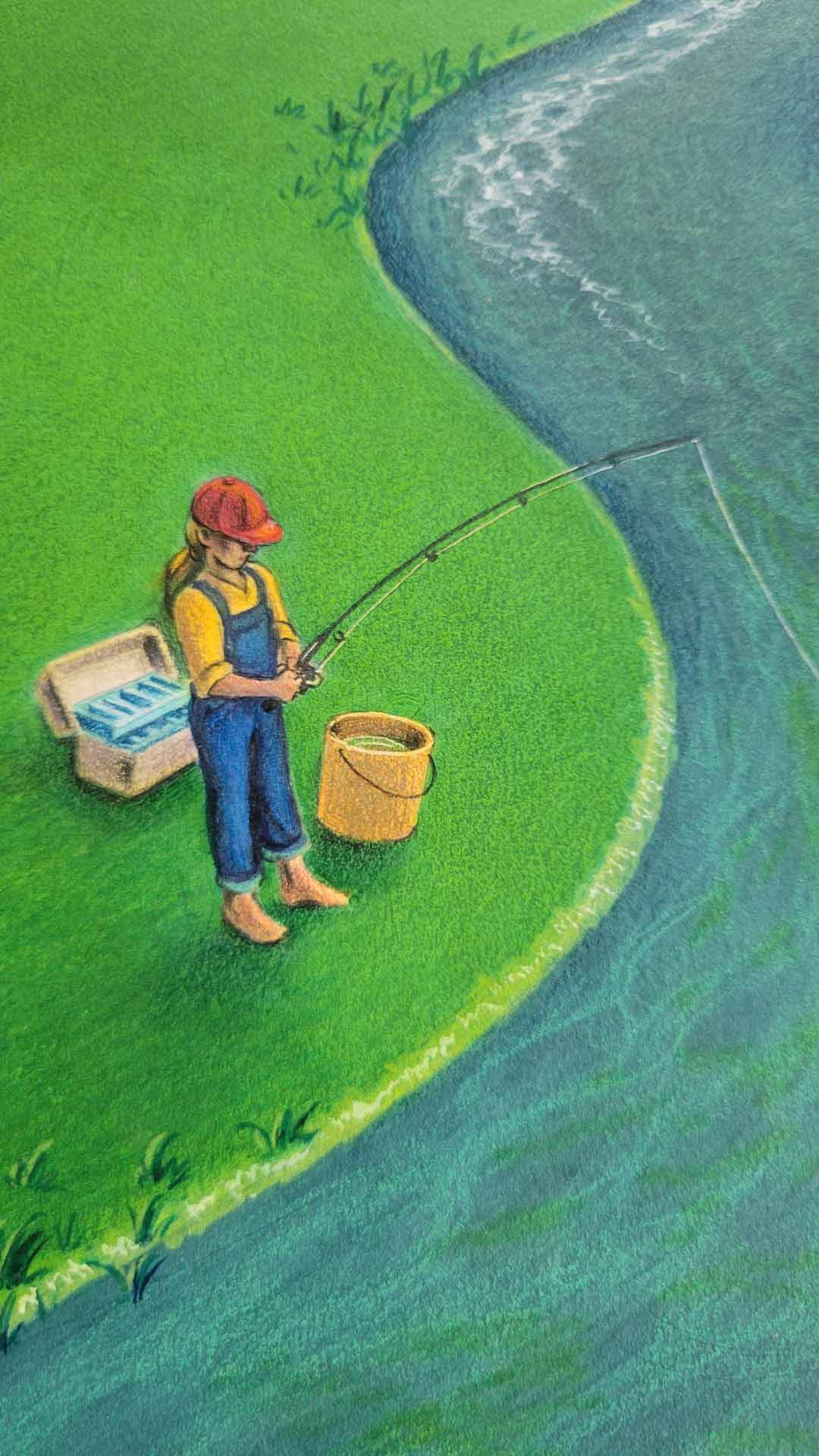
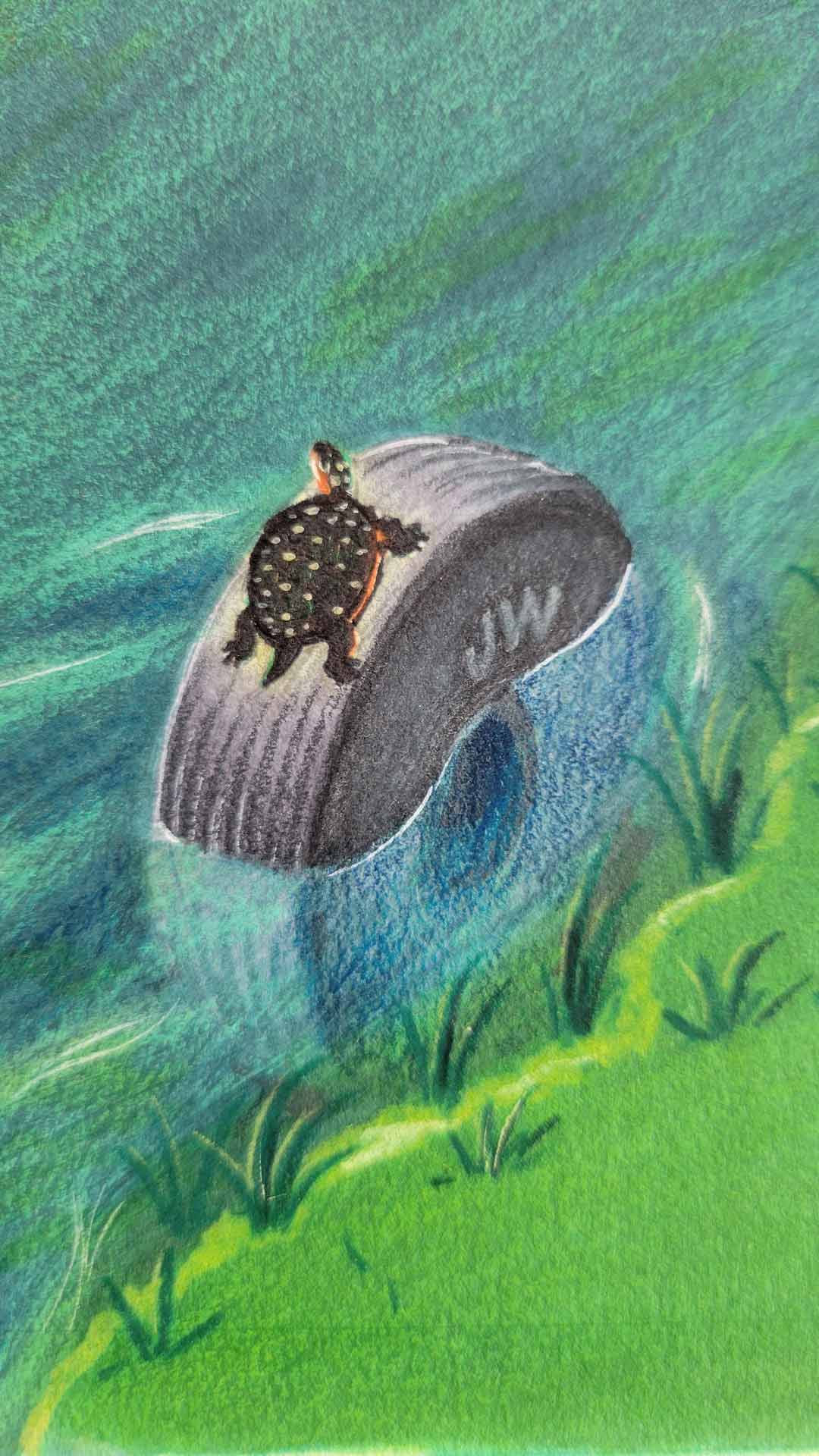
NOW YOU CAN SEE THE IMPORTANCE OF HAVING CLEANER WATERSHEDS!
If you are interested in OUR WATERSHED here in the Upper Delaware River region, check out the “DELAWARE CURRENTS” to track what’s happening on and around our river: https://delawarecurrents.org

